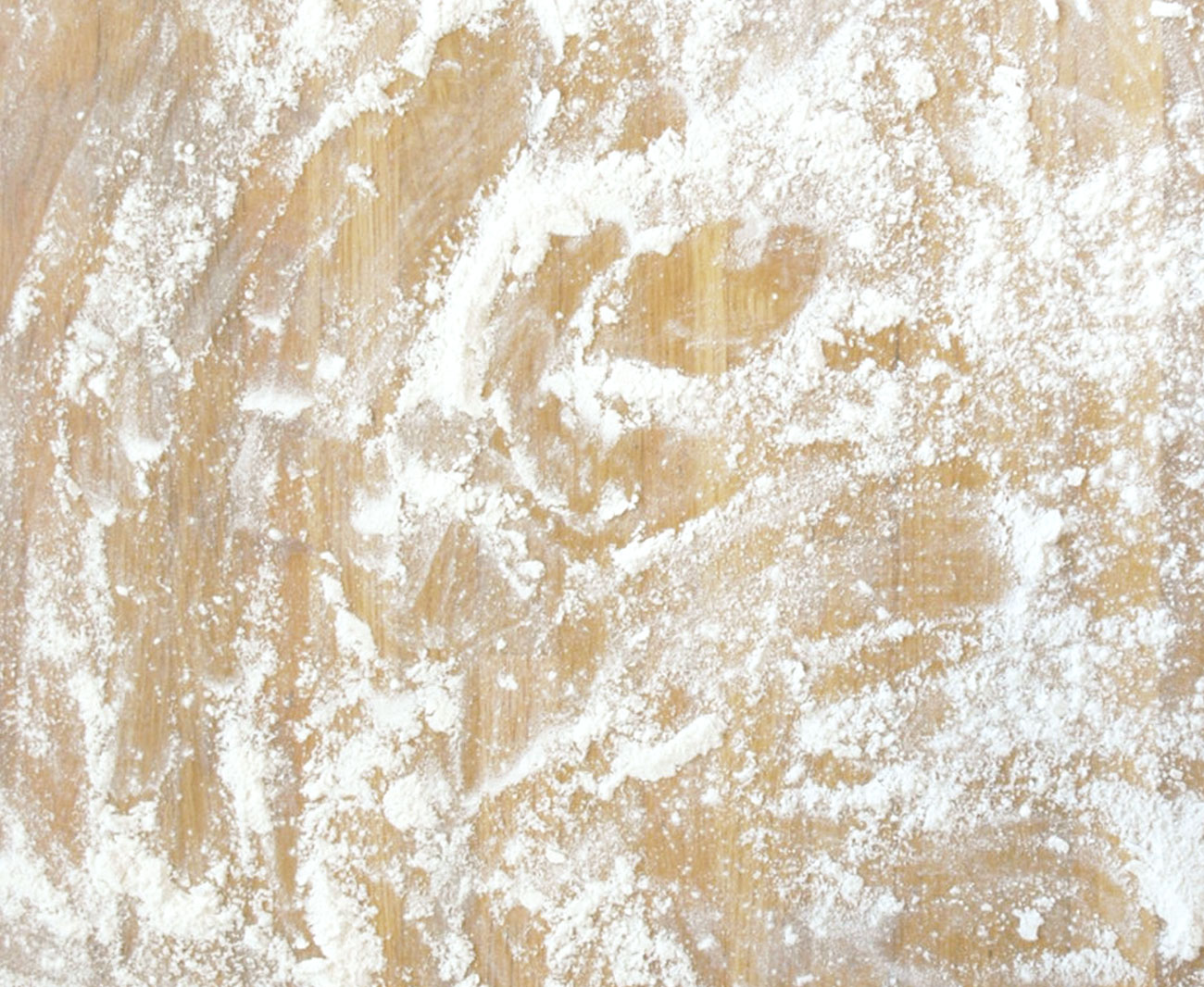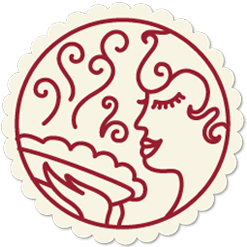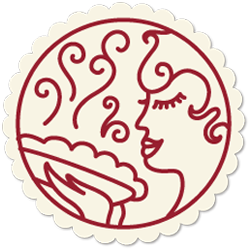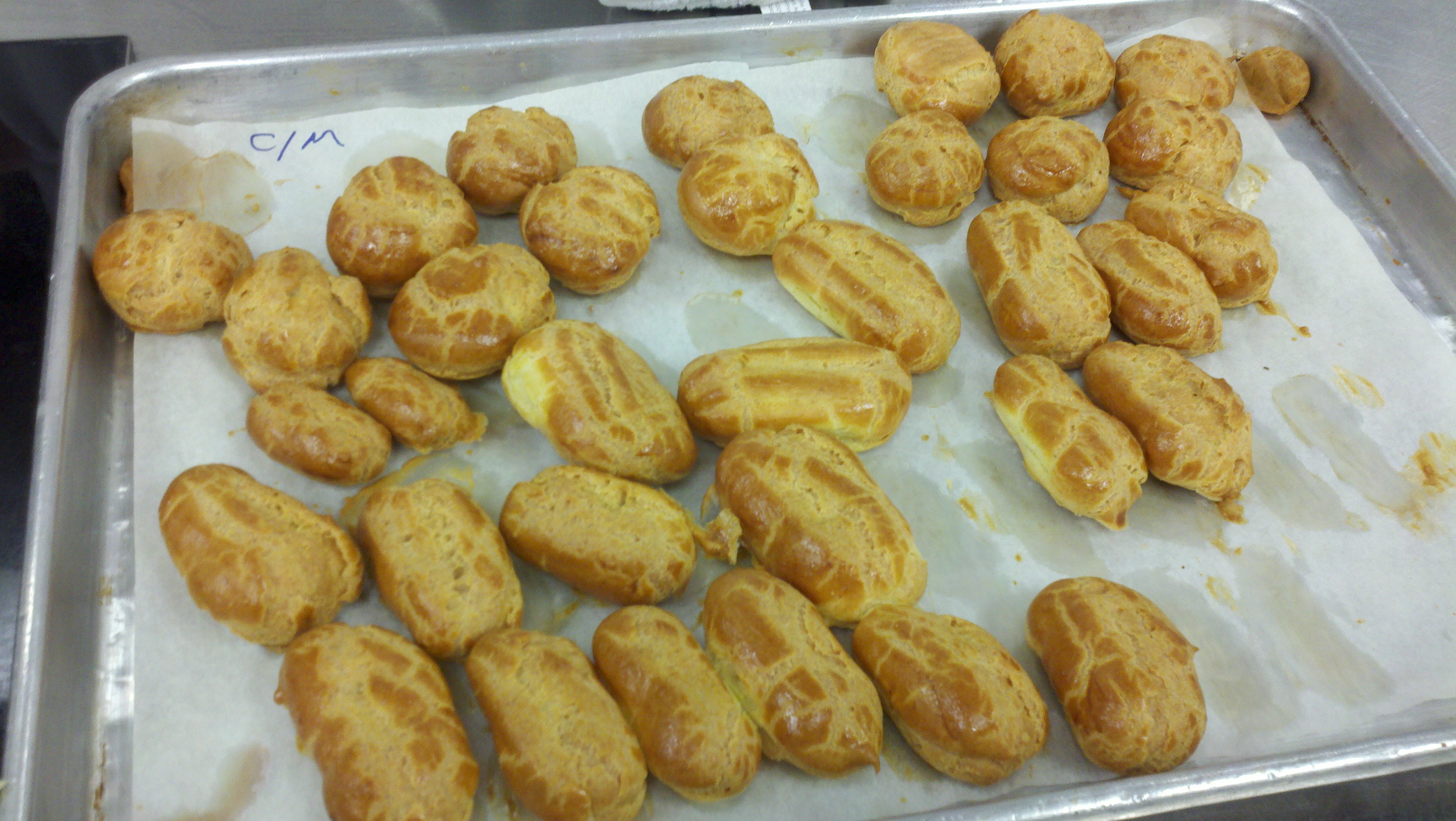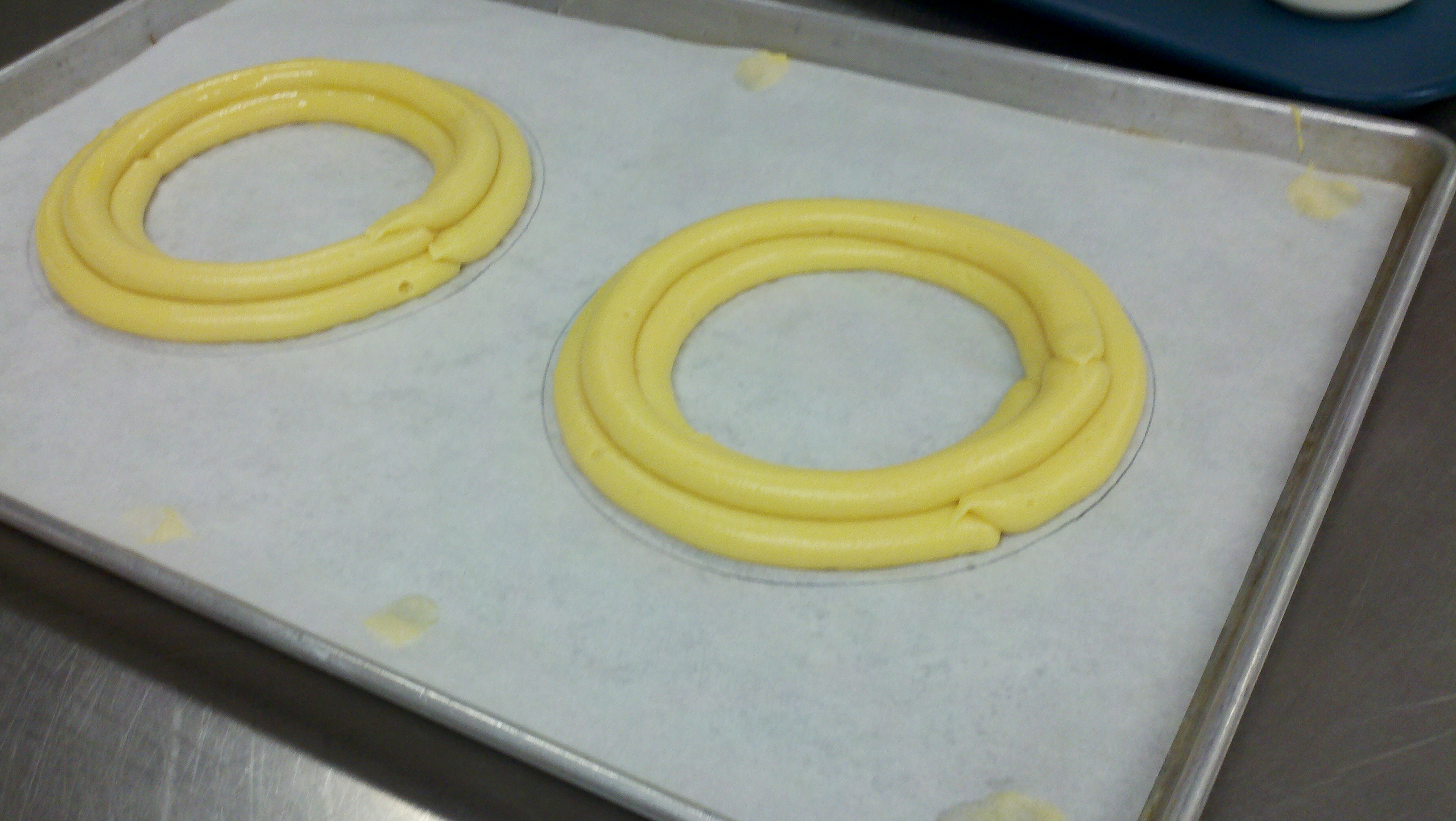If you sneaked a peek at this blog late last night, or raced to check it early this morning (ahem), you already know that session 2 of my pastry techniques class at L’Academie de Cuisine was a bit of a wild ride. We crammed so much pastry dough into a brief period that our little heads were spinning. And in all the hubbub, my fellow students and I managed to make batches of pastry cream so tough you could slam a door on it. (I’m not kidding.)
And it wasn’t our inexperience or our piss-poor technique. It was The Chef’s Fault.
Really. I’m not kidding. It was Chef Claude, our leader and hero, who messed up the recipe. With only half the amount of milk required to make a smooth, creamy custard, we were trying to press a yellow substance resembling thick, sticky glue through kitchen sieves.
For a few minutes, the assistants were scurrying around with encouraging words, assuring us that if we only pressed harder with our spatulas, the custard would ease right through the sieves and be just fine. Uhh, no. That just wasn’t gonna work.
Little by little, the conclusion was inescapable: the pastry cream was seriously messed up and needed to be thrown out. We had spent a chunk of the previous hour making adorable little puffs that we could fill with the cream, and now they were destined to echo emptily all the way home in our cars.
The measure of the staff’s experience and skill was in the quick recovery. By the time the students cleaned up and got ready to file out the door, they had whipped together a big batch of fresh, smooth pastry cream for us to divvy up and take home. (As any of you who have worked in restaurant kitchens already know, the demand for this sort of graceful recovery isn’t infrequent. I’ve seen breathtaking screw-ups fixed in unpredictable ways on many occasions, and it never ceases to impress me.)
And so it was that I delighted myself with teensy éclairs, brimming with custard, right before bedtime. (Contrary to whatever asinine medical or maternal advice you might have heard, doing this sort of thing ensures an incredibly blissful sleep. And a long life. And a really happy, forgiving attitude toward anything that could go wrong, and toward all of humanity. But I digress…)
The earlier part of class had been much less eventful. Our adventure making puffs for the pastry cream was designed to expand our experience with pâte à choux pastry, which we learned last week. We made more straight-ahead miniature cream puffs, by piping small round blobs of dough onto parchment-lined sheets, as we had done before.
Then Chef Claude demonstrated piping two new shapes: the éclairs and something I had never heard of: salambos. Salambos are elongated, like éclairs, but they’re narrower and flatter, so you have to press downward slightly on the piping bag as you press out the dough and draw it back. Piping an éclair, you keep the pastry bag tip up a bit, letting the dough fall gently onto the parchment in a loftier tube shape.
He also showed us how to pipe a Paris-Brest, an impressive dessert shaped like a bicycle wheel in honor of the famous bike race from Paris to–guess where?–Brest. To make the nice airy, large circle, he showed us a couple of neat tricks.
You trace a plate on the parchment paper, then flip it over so the pencil marks don’t bake into the bottom of your pastry. Then, using a really big pastry bag tip (like a #8, for those of you who are into these details), you pipe a circle of dough, and then another circle inside it. A third circle of dough is laid down in the seam formed by the bottom two.
The finished version is gorgeous. Imagine what it would look like sliced open and filled with praline pastry cream. (Yes, you’ll have to imagine it, because we didn’t have time to get that far with it.)
Chef Claude walked us through demonstrations of making pâte brisée (flour, butter, salt and cold water; common in savory dishes like tarts and quiches) and pâte sucrée (butter, sugar, vanilla, lemon zest, eggs, salt and flour; lots of uses, from sugar cookies to sweet tart crusts). Two omnipresent doughs, two very different techniques.
We made the first much like pie dough, except that we left it on low speed in the mixer a bit longer to get the butter pieces a bit smaller than many pie fanatics advocate. Chef taught us to dump out the bowl contents when they are still pretty darn crumbly, adding the remaining water very sparingly as we use our bench scrapers to gather and gently press the dough together, again and again. When it holds together, we patted it into a nice squarish shape and wrapped it in plastic wrap for next week.
The pâte sucrée was a whole other story. He showed us how to start it with sugar and very soft butter in the mixing bowl, leaving it to blend on low until you can’t feel the graininess of the sugar in it anymore. You add lemon or vanilla at this point if you want to. Then you dump in the salt and half the flour, and mix for a couple/few minutes until it’s incorporated, then you add the rest of the flour and mix only until the dough comes together, a couple/few minutes more. We gathered the dough into a ball and plastic-wrapped it.
It was at about this point that we waded into the Pastry Cream Fiasco. General consternation all around. After nearly three hours of demonstration and making the three doughs, everybody was tired and we cleaned up, took our chef’s jackets off and packed up our tools. Then, with a laugh and an apology–all in a French accent, of course–Chef Claude unveiled the fresh pastry cream as a sendoff.
Next week, we’ll haul the pâte brisée and pâte sucrée out of the refrigerator and see what trouble we can get into. Can’t wait.
